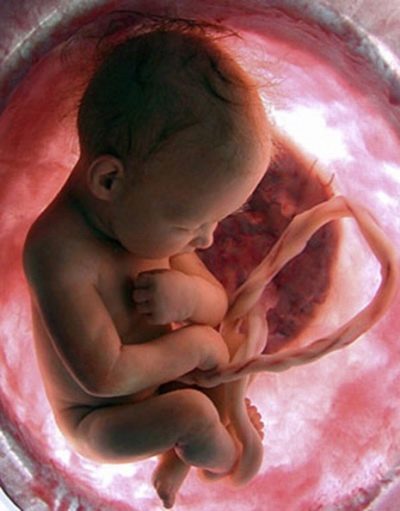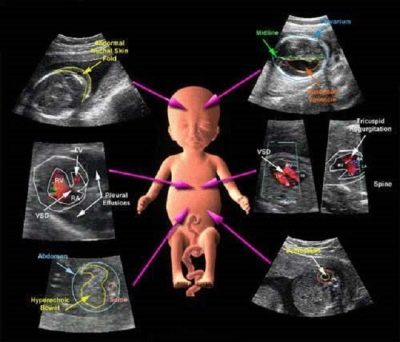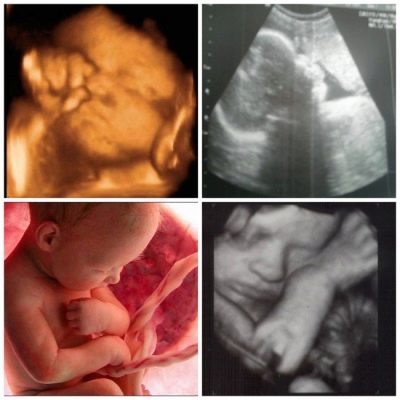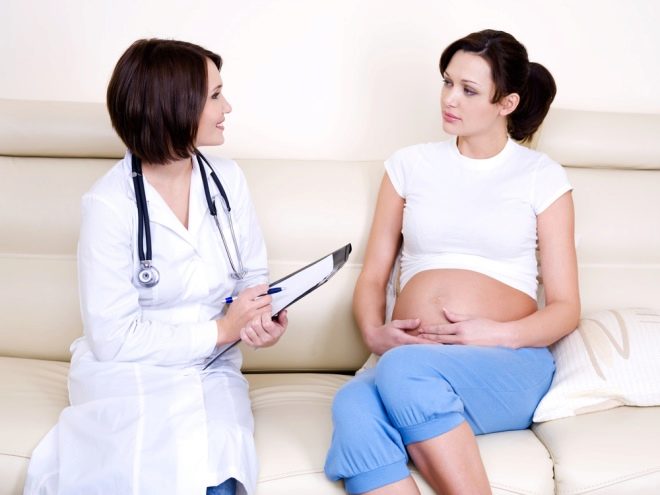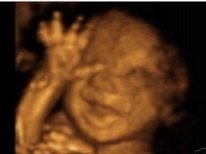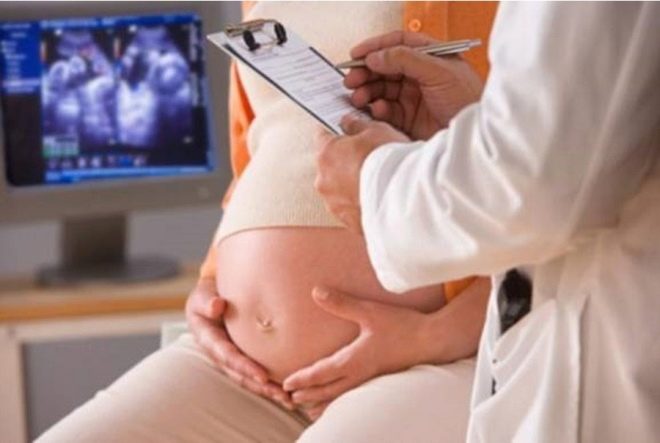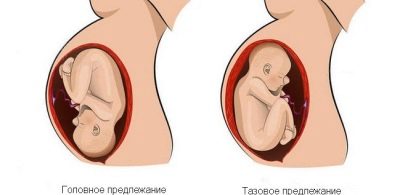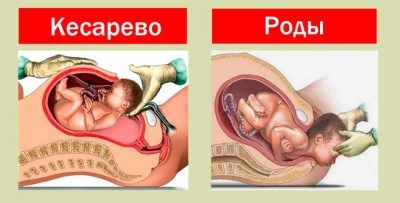Fetal development in the 31st week of pregnancy
Every week of the third trimester of pregnancy is very important, because very soon the crumb, growing in my mother's belly, will be born. This article will tell about the features of fetal development at week 31.
Anatomical features
By this time of pregnancy, the baby is already quite large. Interestingly, with each subsequent day more weight of the child increases than its length. This feature is due to the upcoming preparation of the child's body for a quick birth.
The parameters of the body of the fetus can be determined using special ultrasound. Examination of the fetus, in which the specialist makes the main measurements of the children's torso, called fetometry. With the help of this study, doctors evaluate how well the intrauterine development of the baby is proceeding.
During this examination, the doctor must determine the weight and height of the child. It also measures the size of certain parts of the baby’s body. The normal values of the studied clinical parameters are presented in the table below.
Study criteria | Norm at 31 weeks gestation |
Growth | 38-40 cm |
Body mass | 1400-1500 grams |
Biparietal size (BPR) | 74-87 mm |
Forearm Bone Length | 45-52 mm |
Bone length of shin | 52-59 mm |
Thigh length | 55-64 mm |
Shoulder length | 51-60 mm |
Abdominal circumference | 24.8-30.1 cm |
Head circumference | 27.4-31.5 cm |
Frontal-nuchal size | 94-109 mm |
How is it developing?
Quite interesting changes begin to occur in the brain of the baby. This organ can be compared with a computer that coordinates the work of all vital organs and systems. In the cerebral cortex, the child appears quite a lot of furrows and convolutions. Such a specific structure of the cerebral cortex contributes to the fact that with each passing day, the baby develops more and more reflexes. They are necessary for the child so that in a few weeks he can adapt to the new external environment.
Features in the changing behavior of the baby are also due to the fact that between the nerve cells there are quite a lot of specific contacts. The number of synapses also increases. Such a complex system of nervous activity leads to the development of certain changes in the child's sense of self.
Formed sense organs can react to various stimuli. A kid who weighs only one and a half kilograms is already capable of experiencing a whole range of different sensations: he can determine the taste, turn away from a strong source of light, or even not “fall in love” with a certain smell.
Scientific experiments have shown that the fetus at week 30-31 is able to react strongly enough to various smells. Too strong aroma of perfume, for example, can cause discomfort in the fetus. He will “inform” his mom about this - he will start pushing harder.
By this time of pregnancy, the fetus already has the ability to experience pain. This feature is due to a fairly good development of the peripheral nervous system.
Another interesting manifestation of fetal life is the appearance of hiccups. Baby hiccups after swallowing amniotic fluid. During the day, he is able to swallow about 500 ml of liquid. The kidneys of the baby are already formed and functioning, which means that the fetus is already able to urinate.
The appearance of hiccups in a baby can be perceived by his mother. Usually a pregnant woman feels at such a moment that the child kicks or becomes very active. Such a reaction of the baby is quite normal and indicates the physiological course of its intrauterine development.
Various reasons can lead to an increase in the motor activity of the fetus. The most frequent of these is tissue hypoxia. This condition is accompanied by oxygen starvation of internal organs and tissues, which has arisen due to insufficient oxygen in the blood. The fetus usually reacts to severe hypoxia by increased motor activity. So the baby is trying to attract the attention of the mother and thus report that he is experiencing marked discomfort.
If a pregnant woman began to feel that her baby has become much more frequent and stronger to kick, then she should discuss it with her doctor. Follow the development of pregnancy is very important even in the third trimester. Any adverse symptoms in the future mother should be the reason for seeking medical help.
Pull with medical advice when leaking amniotic fluid or severe pain in the abdomen is not worth it.
A baby born at week 31 is already viable. He already has his own heartbeat, and the main internal organs have been formed. However, usually in such babies after birth, breathing is imperfect. In order to leave a child in the first days after his birth, special medical conditions are required.
What does it look like?
The skin of the baby every day becomes lighter. This is due to the accumulation of not only brown, but also white subcutaneous fat. The amount of fat in the children's body is gradually increasing. This is necessary so that the baby could be born and not be supercooled.
On the face of the child are already clearly visible cheeks. Every day they are becoming more plump. The eyes of the baby cover the eyelids. In moments of wakefulness, the eyes of the fetus are ajar. In those moments when the child is asleep, the eyelids are almost completely closed.
A child has dimples near the elbows. Every day the skin of the baby is becoming more and more smooth. The body of the child still covers the lanugo - special downy hairs. The skin of the baby is still covered with wrinkles, as he is still in the aquatic environment.
How is it located in the womb?
During pregnancy, doctors several times determine how the baby “lies” in the uterus. The fact is that the position of the fetus is a very important clinical criterion. Proper assessment of the location of the fetus is necessary for the selection of an adequate method of delivery.
Not all presentations are equally functionally beneficial to the fetus. In some of them, independent vaginal delivery can be very dangerous due to the development of a number of complications and injuries.
The most anatomically favorable presentation of the fetus in the womb, doctors call headache presentation. With him, the child's head is at the bottom. In this case, during childbirth, the head of the fetus passes first, and thus the other, smaller, parts of the baby’s body become born much easier.
The transverse location of the fruit is considered less favorable option. In this situation, the fetus is located perpendicular to the longitudinal line of the uterus. The location of the main body parts of the baby across the birth canal is fraught with difficulties at birth. In this case, the risk of birth injuries is quite high.
Also not very favorable from the physiological point of view is the pelvic presentation. In this case, the fetus is located upside down, and the baby’s pelvis is located first towards the birth canal. In this case, during childbirth, the natural movement of the fetus through the birth canal is disrupted. In this situation, the child may be “stuck” in the birth canal at birth.
In order to prevent complications, doctors resort to an auxiliary method of delivery, which has been known for many centuries, - cesarean section.
You can find out what happens to mother and baby during the 31st week of pregnancy in the following video.


